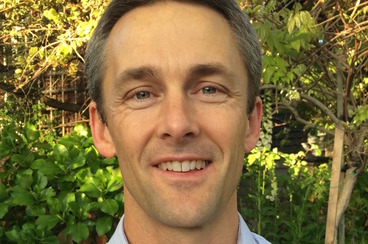Studying the History of an Imagined Future: A Q&A with Dr. Matthew O’Hara
May 24, 2016 • By Matthew O'Hara
Historians are often preoccupied with how people in a particular time and place grappled with the past. Less commonly studied are the practices of “future-making,” where historical subjects planned for, thought about, and manipulated a future full of risk and uncertainty. Matthew O’Hara, Associate Professor of History at the University of California-Santa Cruz, is exploring how future imaginaries were constructed in colonial Mexico. Through case studies, he is considering topics that tend to be associated with religious studies (like prayer and prophecy) alongside areas that are often considered the purview of economic historians (like credit and futures markets). He argues that colonial Mexico’s culture of innovation and future-making has been forgotten, in part because it did not fit with later definitions of modernity and innovation as secular phenomena.
Read a blog post by Matthew O'Hara about the compatibility of innovation and tradition here.
What was the seed or the spark for the research you’re pursuing for the Enhancing Life Project? Are these new questions, or an extension of past research, or both?
I started thinking about these issues when I was working on my previous book and came across a document that didn't make sense. It was some bylaws for a brotherhood that was being founded in the late 18th century. It was paradoxical because on the one hand, it was very much about individual self-improvement and even worldly improvement—concepts that were being conceived almost in the way we’d think of them. But at the same time a lot of their practices were very traditional even antique for the time. For example, they were using self-flagellation, which was considered kind of passé at the time in Mexico. I was puzzled because this was a new religious movement that was drawing on these traditional baroque practices. And that began the journey down the rabbit hole.
What are the case studies you’re exploring in your research?
My idea is to try to understand how people in this time period understood the future: how they tried to manipulate and influence it, how they could plan for it, and what techniques they used for all of these. My hunch was that there was a lot of future-orientation and what we’d call innovation happening during this time—that is, colonial Mexico between the sixteenth and eighteenth centuries—but it’s hidden from our contemporary vantage point because we tend to see modernity and the future as secular and often economic in nature, while they saw the economic and the spiritual bound together.
And then in terms of the case studies, which will be chapters in the book project that emerges from this, I made a choice to try to combine economic history and religious studies because in these materials, there’s no clear boundary between the economic and the spiritual at all. So I’m focusing each case study on an overarching theme—like credit practices and futures trading—but showing how a religious-economic logic was common to all of the case studies. For example, when thinking about credit practices, we need to keep in mind that the Catholic Church carved out a moral and theological role for itself as a market regulator. This meant that in almost every economic transaction, in the background there was some religious or theological language that could be used to negotiate the contract, to decide what’s a just price or a fair loan.
How has the concept of “enhancing life” been helpful for your project?
What I find helpful about the concept of enhancing life—without stipulating exactly what that is, because I’m still figuring it out—is that it recognizes and is sensitive to culturally and temporally different definitions of that term. But at the same time, it also pushes back against researchers’ tendency to just inhabit our own world. It’s open to comparative conversations. That’s one of the things I’m trying to do in my own project. I’m trying to think about what future-making or innovation means for people in my time and place, but I don’t just want to say, well, there’s no way for me to engage with the people who are thinking about these issues in early modern Europe or British North America or maybe even in our own time.
How do public debates shape your work? What are you hoping to offer those debates?
There’s a debate about one of the big questions that has floated around Latin American Studies for a while: How did Latin America fall behind? For example, why did Latin America have weaker political institutions and more political turmoil and violence than the United States in the nineteenth and twentieth centuries? Why did economic growth lag behind the North Atlantic economies? With this project, I wanted to push back and reframe that conversation about Latin America in a way that opened up some different vistas onto its history. That’s why I wanted to frame the book around future-making, rather than starting with a perceived gap or absence.
You don’t spend all of your time doing research and teaching! What’s your favorite place to travel, or the next place you’d like to go?
As a person who lives in northern California, I love to get into the local mountains. So I want to go backpacking on the Lost Coast, between Mendocino and the Oregon/California border.